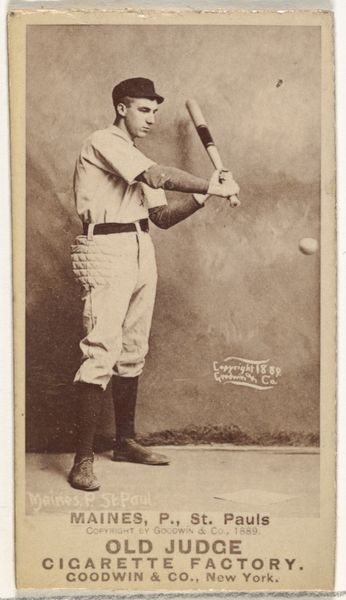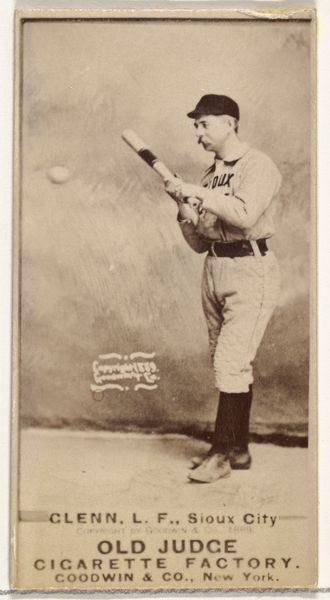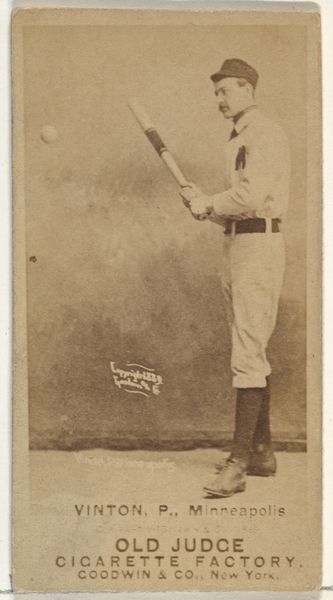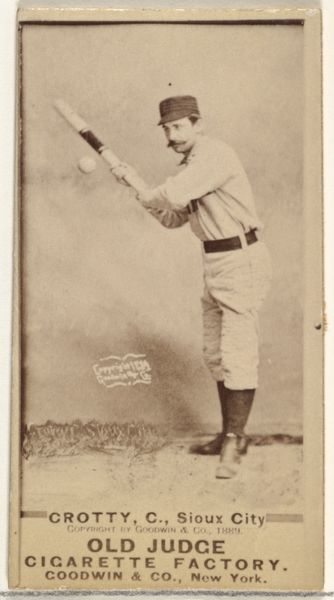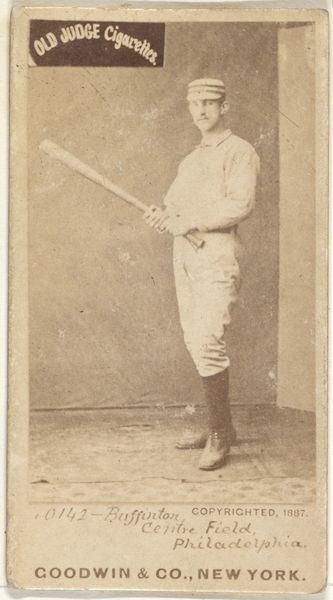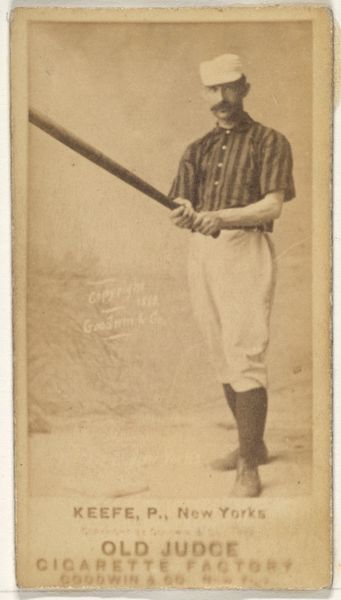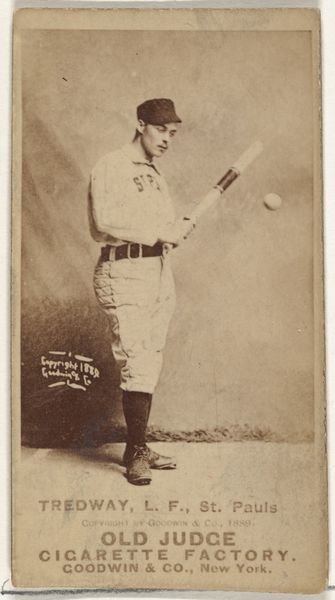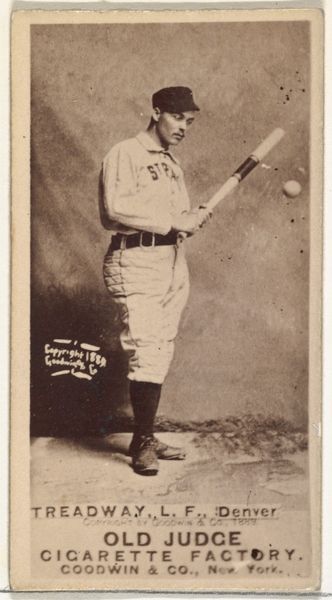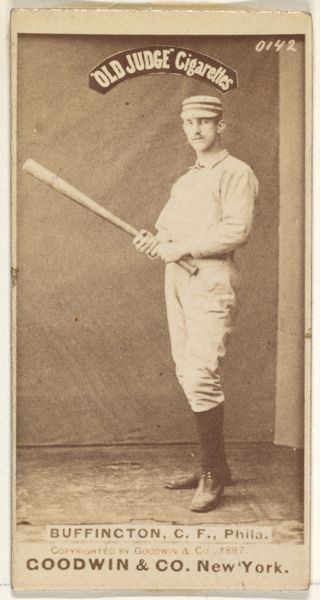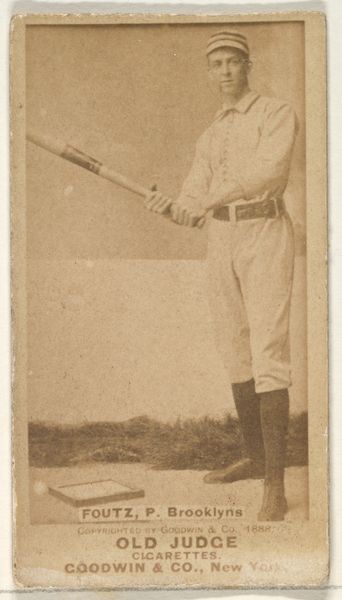
H. Smith, Shortstop, St. Joseph Clay Eaters, from the Old Judge series (N172) for Old Judge Cigarettes 1889
0:00
0:00
drawing, print, photography
#
portrait
#
drawing
#
still-life-photography
# print
#
baseball
#
photography
#
men
#
pencil work
Dimensions: sheet: 2 11/16 x 1 3/8 in. (6.9 x 3.5 cm)
Copyright: Public Domain
Curator: This fascinating piece, dating back to 1889, is titled "H. Smith, Shortstop, St. Joseph Clay Eaters." It's from the Old Judge series (N172), a promotional item for Old Judge Cigarettes, produced by Goodwin & Company. Editor: It has a rather striking, austere presence, don't you think? There's something inherently captivating in its vintage, sepia tones—the direct gaze and formal pose contrast starkly with our contemporary ideas around promotional portraiture. Curator: Indeed. The photographic technique of the late 19th century contributes to this feeling, highlighting its purpose in capturing an individual likeness. Goodwin & Company, primarily known for photographic prints, employed imagery tied to popular culture to drive their advertising agenda, capitalizing on the rise of baseball as the “national pastime.” Editor: It really highlights how sport and commerce become intertwined early on. We are used to this hyper commercial relationship today. What strikes me now is, who got to participate? Baseball culture at this point must have reflected a great deal of gendered and racial biases, and that gets glossed over in the way we now regard nostalgic memorabilia of the era. Curator: That’s a critical point. While we admire the photograph, we must consider how such marketing may also reflect the socio-political landscape and inherent systemic biases embedded within a certain popular activity. Editor: Exactly. It acts as an innocent historical artifact and cultural snapshot that requires an interrogation beyond simple surface nostalgia. Do we know anything more about H. Smith beyond his presence here as an advertising tool? Curator: The information we have about specific players within these series of photographs remains rather limited, yet their visual presence played a pivotal role in fostering connections between consumers and baseball culture at a time of increasing professionalization of this popular sport. Editor: That leaves a gap, doesn’t it? Smith is both immortalized and flattened. He’s trapped between the glory of a game on the rise and being essentially a billboard for nicotine, forever. It shows that art serves more than aesthetic roles but as evidence, too. Curator: Absolutely. The work functions simultaneously as art and social commentary offering more meaning now with historical hindsight.
Comments
No comments
Be the first to comment and join the conversation on the ultimate creative platform.

